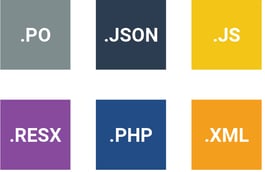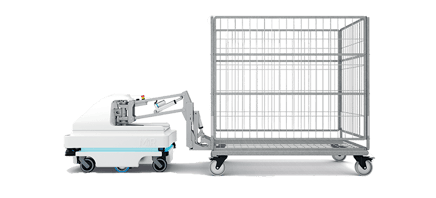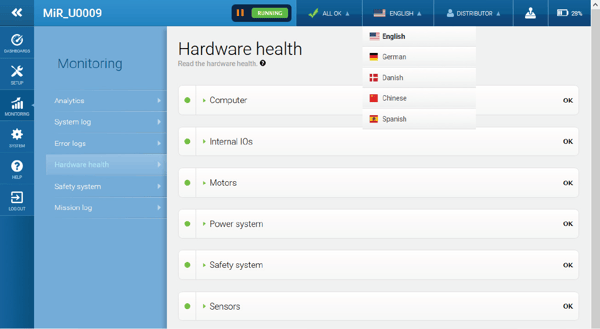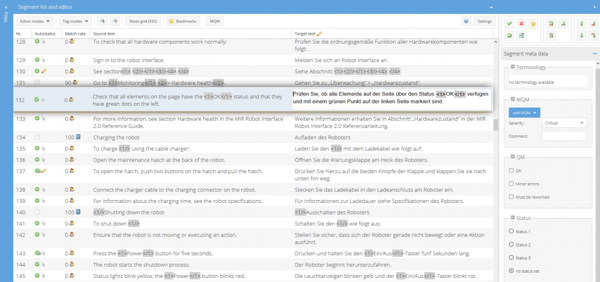CASE STUDY:
Mobile Industrial Robots (MiR) is the leading manufacturer of unique collaborative robots. MiR manufactures robots that help to automate and streamline industries, for example, industries operating in the healthcare sector. MiR is a rapidly growing company, which sells its robots all over the world. This means that the company needs to translate its texts – software user
interfaces, technical manuals and marketing material – so that they can be used in the markets the company operates in.
World Translation is MiR’s partner, providing language services and translations. We deal with more than 17 target languages for MiR, including Chinese, German, Italian and Spanish.
WHAT IS SOFTWARE TRANSLATION?
Software translation is the translation of a software user interface and local adaptation. Local adaptation can be the adjustment of a currency, units of measurement and adaptation to suit cultural differences.
World Translation can translate many software file formats, including:

MANAGING SOFTWARE TRANSLATION
MiR’s collaborative robots use a browser-based user interface, which is translated into four
languages and updated on an ongoing basis. It is important for MiR that the user interface is translated into the local language so that the users can configure and operate the robots easily. In order to translate the user interface, the text is extracted as a PO file. The PO file is included in a standardised workflow at World Translation, so that we can quickly and easily process and translate these file types. MiR therefore simply orders a translation via our free customer portal. Once the translations are complete, MiR reviewers are able to review the texts, and MiR then
receives the translated PO files, which are ready for use in the different language versions.
Software translation often presents a challenge to translators because they lack context to base their translation on. To ensure the best conditions for the translator, we have a login to a
simulator. This means the translator can see the user interface and test how the
user interface works.
“By using a pre-defined workflow, quality assurance procedures and the latest technology, we ensure that MiR receives translated PO files that meet their requirements – both in relation to language and to technical quality.”
Per Harbo Sørensen
Head of Technology Department, World Translation
SOFTWARE THAT REQUIRES ONGOING UPDATES
Because MiR regularly updates its software, all of the language versions of the user interface must also be updated on an ongoing basis. It is important for us that the process is easy,
efficient and benefits the customer. MiR therefore sends the updated version of the source PO file, and we ensure that the new updated text segments are translated. MiR then receives the completed PO files, now in the target languages. We can make this process easy because all of the unaltered text that was previously translated is “locked”. This means the translator only needs to focus on the new and updated text.
All of the texts that we translate for MiR are also saved in a translation memory. This means that the translator can see which text we previously translated for MiR and which text is new. MiR only pays for the translation of the new updates, which significantly reduces the company’s translation costs. It also means that much less time is spent on translation because you no longer have to translate everything from scratch.
“We have a really good collaboration with MiR. When you have a relatively complicated
translation workflow to deal with, it is incredibly important that there is a good dialogue
between the customer and us, so that we have an understanding of each other’s systems and processes, and the collaboration between us and MiR functions really well. By having a dialogue about our systems and processes, we have together devised the process that is the most efficient and which ensures the best quality for their UI translations.”
Stine Lyngholm Eriksen
Head of Project Management, World Translation
REVIEW AS PART OF THE WORKFLOW
As part of the translation workflow, MiR can review the translated texts to ensure that the agreed terminology has been used in the translations. When it comes to software, it is very
important that the terms are completely correct. When a new update is implemented, we ensure that MiR in-house reviewers can spend their time reviewing the updated texts and not the entire user interface. To make this process as easy and as automated as possible, MiR uses the World Translation Language Portal. Once the texts have been translated, they are automatically
transferred to the portal where they can be reviewed.
If MiR makes any revisions, these changes are updated automatically in the company’s
translation memory, so our translators can see which terms to use the next time they translate
a MiR text.
“We operate in a very dynamic development environment and every month we update things like our user interface with new features and online help texts. This means that we are deeply
dependent on a flexible partner, so that we can get the translations into the four languages back to us as quickly as possible. World Translation is precisely the partner we need. They deliver
every time, are professional and meet deadlines – even urgent deadlines.”
Trille Korsgaard Kristensen
Technical Writer, MiR





